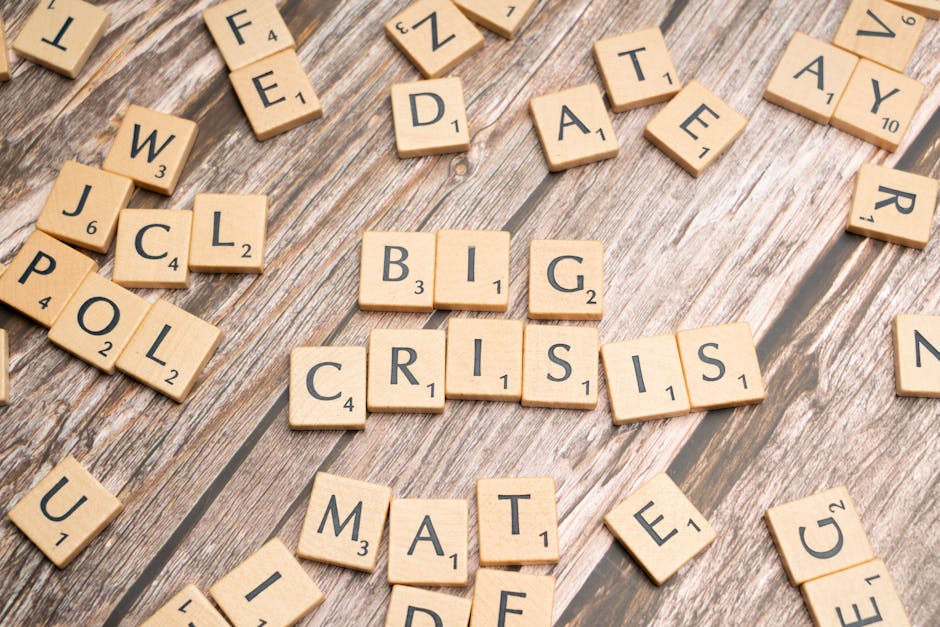Effective Strategies for Crisis Communication: Navigating Through Uncertainty
In today’s fast-paced and interconnected world, organizations face a myriad of challenges that can quickly escalate into full-blown crises. Whether it’s a data breach, a product recall, a natural disaster, or a social media firestorm, the way a company handles a crisis can make or break its reputation. In times of uncertainty and chaos, effective crisis communication can be the key to not only surviving but also thriving in the aftermath.
But what exactly constitutes effective crisis communication? How can organizations prepare for and respond to crises in a way that minimizes damage and fosters trust with stakeholders? In this comprehensive guide, we will delve deep into the strategies, best practices, and nuances of crisis communication. From understanding the psychology behind crisis response to crafting timely and authentic messages, we will explore the essential elements that make up a successful crisis communication plan.
The Importance of Proactive Crisis Communication

One of the fundamental principles of effective crisis communication is the importance of being proactive rather than reactive. In today’s 24/7 news cycle and social media landscape, organizations no longer have the luxury of waiting until a crisis hits to start formulating a response. Instead, they must have a robust crisis communication plan in place long before any signs of trouble arise.
Proactive crisis communication involves anticipating potential crises, identifying vulnerabilities, and developing strategies to mitigate risks. By taking a proactive approach, organizations can not only minimize the impact of crises but also build resilience and trust with their stakeholders. Let’s take a closer look at some key strategies for proactive crisis communication:
1. Conducting a Risk Assessment

Before a crisis occurs, organizations must conduct a thorough risk assessment to identify potential threats and vulnerabilities. This involves analyzing the internal and external environment, assessing the likelihood and impact of various risks, and prioritizing key areas for mitigation. By understanding the risks they face, organizations can develop targeted strategies to prevent, prepare for, and respond to crises effectively.
2. Developing a Crisis Communication Plan

Once the risks have been identified, organizations should develop a comprehensive crisis communication plan that outlines roles, responsibilities, and communication protocols in the event of a crisis. This plan should include key contact information, escalation procedures, message templates, and communication channels to ensure a swift and coordinated response. By having a well-defined plan in place, organizations can minimize confusion and ensure that all stakeholders are kept informed and engaged throughout the crisis.
3. Establishing a Crisis Communication Team

Effective crisis communication requires a dedicated team of professionals who are trained and prepared to handle crises as they arise. This crisis communication team should include representatives from various departments, including communications, legal, human resources, and senior management. By bringing together diverse perspectives and expertise, organizations can ensure that they have the necessary skills and resources to respond to crises swiftly and effectively.
4. Monitoring and Listening
In today’s digital age, crises can escalate rapidly on social media and other online platforms. To stay ahead of the curve, organizations must actively monitor and listen to conversations happening online, both about their brand and industry as a whole. By monitoring social media channels, news outlets, and other sources of information, organizations can identify potential crises early on and respond proactively to mitigate damage.
5. Crafting Authentic and Transparent Messages
When a crisis hits, the way an organization communicates can have a significant impact on how it is perceived by stakeholders. In times of uncertainty and chaos, it is crucial to craft authentic and transparent messages that acknowledge the situation, demonstrate empathy, and provide clear and accurate information. By being open and honest with stakeholders, organizations can build trust and credibility, even in the midst of a crisis.
6. Engaging with Stakeholders
Effective crisis communication is not just about broadcasting messages; it is also about engaging with stakeholders in a meaningful way. Organizations should be proactive in reaching out to key stakeholders, including employees, customers, investors, and the media, to keep them informed and address their concerns. By fostering open and two-way communication, organizations can build rapport and loyalty with their stakeholders, even in times of crisis.
Case Studies in Crisis Communication
Throughout history, there have been numerous examples of organizations that have successfully navigated crises through effective communication strategies. One such example is Johnson & Johnson’s response to the Tylenol poisoning crisis in 1982. When seven people died after ingesting cyanide-laced Tylenol capsules, Johnson & Johnson acted swiftly to recall the product, cooperate with law enforcement, and communicate openly with the public. By putting customer safety first and taking responsibility for the crisis, Johnson & Johnson was able to regain the trust of consumers and emerge stronger than before.
Another notable case study is Airbnb’s response to a series of high-profile incidents involving hosts and guests. In each instance, Airbnb took immediate action to address the situation, communicate openly with both parties, and implement changes to prevent similar incidents in the future. By listening to feedback, being transparent about their actions, and demonstrating a commitment to safety, Airbnb was able to maintain the trust of its community and continue to grow despite the challenges.
Common Misconceptions About Crisis Communication
Despite the importance of crisis communication, there are several common misconceptions that can hinder organizations’ ability to respond effectively to crises. One of the most prevalent misconceptions is the belief that a crisis will never happen to your organization. In today’s volatile and unpredictable environment, no organization is immune to crises, and failing to prepare can have devastating consequences.
Another misconception is that a crisis communication plan is a one-size-fits-all solution. In reality, every crisis is unique, and organizations must be prepared to tailor their response to the specific circumstances at hand. By taking a flexible and adaptive approach to crisis communication, organizations can better navigate the complexities of crises and emerge stronger on the other side.
Conclusion: Building Resilience Through Effective Crisis Communication
In conclusion, effective crisis communication is not just about managing crises as they arise; it is about building resilience and trust with stakeholders in times of uncertainty. By taking a proactive approach, crafting authentic and transparent messages, and engaging with stakeholders in a meaningful way, organizations can weather even the most challenging crises and emerge stronger on the other side.
As the digital landscape continues to evolve and crises become increasingly complex, the importance of effective crisis communication will only grow. By staying prepared, informed, and responsive, organizations can navigate through uncertainty with confidence and emerge as leaders in their industries. So, whether you’re a small startup or a multinational corporation, remember that effective crisis communication is not just a strategy it’s a mindset that can set you apart in times of crisis.




